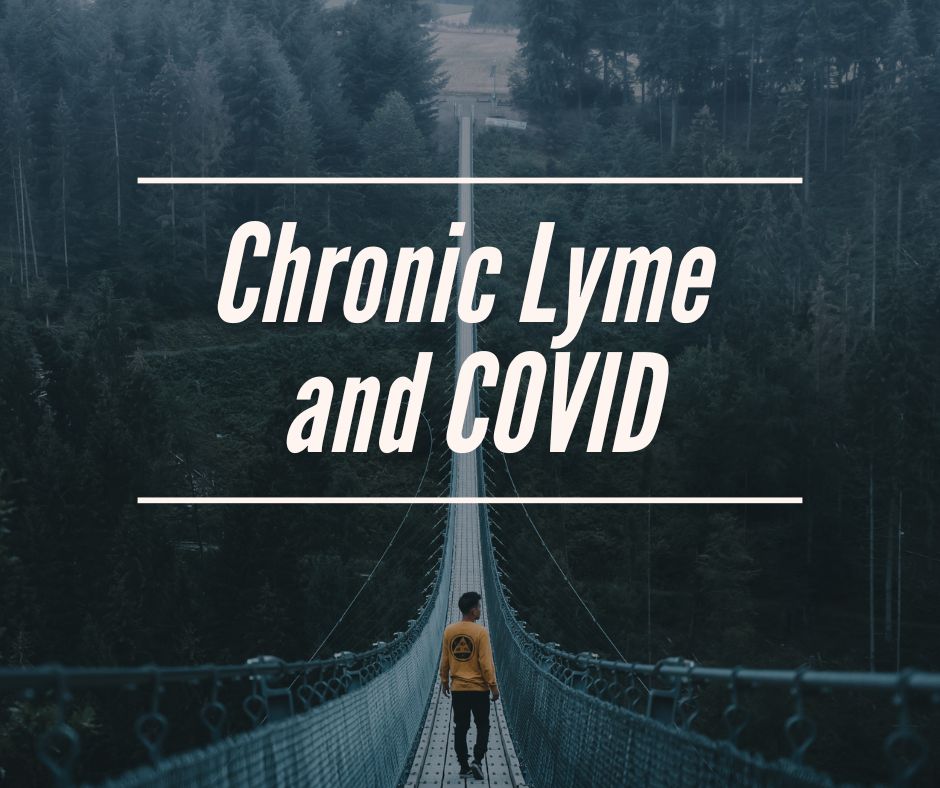Surveying the interrelationship between Lyme disease and COVID-19

From the beginning of the coronavirus pandemic, questions started swirling through the Lyme community.
Two of the biggest ones were: How would COVID affect people with Lyme disease? And, once vaccines became available, how might immunizations affect people with Lyme disease?
Daniel Cameron, MD, a top Lyme doctor who is also an epidemiologist, sought to answer those questions by surveying 889 individuals with Lyme disease.
They fell into three groups:
- 289 individuals with a history of Lyme disease (HLD) who didn’t catch COVID and didn’t take the vaccine.
- 174 people with HLD who did contract COVID.
- 426 people with HLD who were vaccinated. (Most had two shots. Boosters were not available at the time of the survey.)
Respondents who had both contracted COVID and taken the vaccine were excluded to avoid the confounding of these two effects.
The results of the survey have been published in the journal Antibiotics, in an article entitled Consequences of Contracting COVID-19 or Taking the COVID-19 Vaccine for Individuals with a History of Lyme Disease.
The symptom burden
Dr. Cameron and his co-author used the General Symptom Questionnaire-30 (GSQ-30) to contrast the symptom burden between groups. The GSQ-30 is a brief self-report scale designed to assess the Multi-System Symptom Burden (MSSB) in Lyme disease. The MSSB is a validated measure of pain/fatigue, neuropsychiatric, neurological, and viral-like symptoms.
As the journal article explains:
The GSQ-30 asks, “How much have you been bothered by any of the following?” for each of 30 items, which in tandem assess four domains, with each item rated on a five-point Likert scale. Responses include “Not at all,” “A little bit,” “Somewhat,” “Quite a bit,” and “Very much.” Each domain is relevant to specific symptoms in Lyme disease (pain/fatigue, neuropsychiatric, neurologic, and viral-like symptoms).
The survey included a hypothesis-generating or exploratory question, “Have you had any of the following chronic conditions from your COVID-19 illness?” The responses consisted of pneumonia, renal failure, clotting disorder, shortness of breath, loss of smell, loss of taste, long hauler (i.e., long COVID), Positional Orthostatic Tachycardia Syndrome (POTS), other, don′t know, not sure, prefer not to answer.
What were the results?
According to this survey, the symptom burden of HLD was roughly equal among the three groups.
However, those who were vaccinated against COVID-19 had significantly lower neurological symptoms. The neurologic symptoms consisted of hot or cold sensations in extremities, skin or muscle twitching, numbness or tingling, bladder discomfort or change in urination, balance problems or a sense of room spinning, change in visual clarity or trouble focusing, shortness of breath, irregular or rapid heartbeat, shooting, stabbing, or burning pains, and discomfort with normal light or sound.
Additionally, nearly one in five HLD individuals who contracted COVID-19 reported long COVID.
As the authors point out, this study is only an initial foray into examining the interrelationship between Lyme disease and the coronavirus. Many questions remain to be answered: Is having Lyme disease a comorbidity for long COVID? Are ongoing symptoms of long COVID related to the virus or to a persistent tick-borne infection? And what are the specific consequences for Lyme patients of being vaccinated?
I’m sure there are enough questions to keep researchers busy for ages.
Click here to read the article.
TOUCHED BY LYME is written by Dorothy Kupcha Leland, President of LymeDisease.org. She is co-author of When Your Child Has Lyme Disease: A Parent’s Survival Guide. Contact her at dleland@lymedisease.org.




















We invite you to comment on our Facebook page.
Visit LymeDisease.org Facebook Page